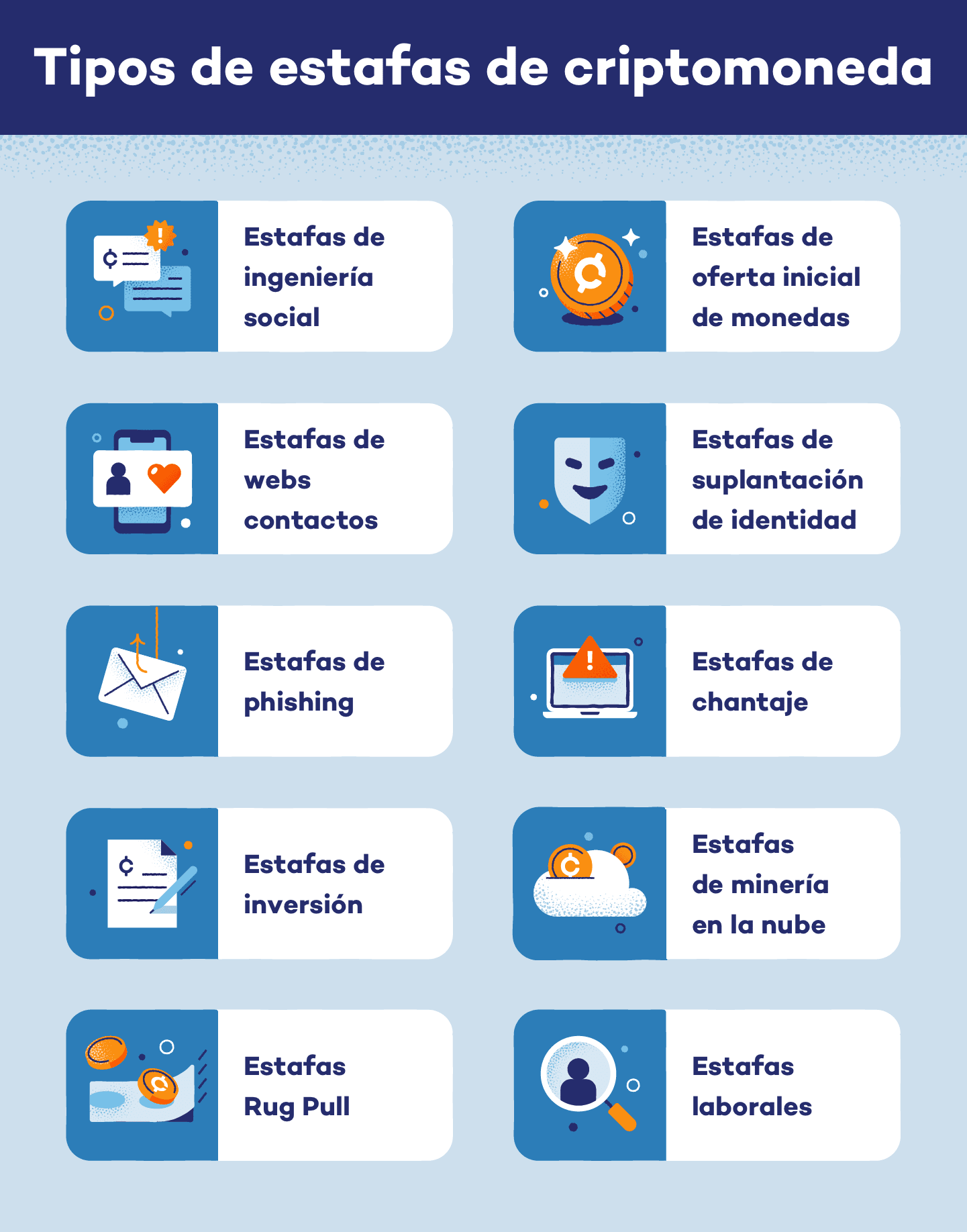To avoid scams in the cryptocurrency world, it is essential to combine **education, caution, and security tools**. Here is a comprehensive guide based on the latest trends and fraudulent techniques detected in 2025:
🔍Main Cryptocurrency Scams and How to Avoid Them
1. Phishing and Fake Sites
- How they act: They create platforms or emails that imitate legitimate exchanges (e.g., Binance, Coinbase) to steal private keys.
- **Prevention**:
- Always verify the official URL
- Use two-factor authentication (2FA).
- Never share recovery phrases or private keys.
2. Romantic Scams ("Pig Butchering")
- Method: Scammers build relationships on dating apps or social media and then promise fake investments in cryptocurrencies.
- **Signs**:
- They avoid video calls or in-person meetings.
- They ask for money for "emergencies" or "exclusive opportunities".
- **Solution**: Never send cryptos to someone you met online without verifying their identity.
3. Rug Pulls and Fraudulent Projects
- **What they are**: Teams that abandon DeFi projects or memecoins after collecting funds.
- **Red flags**:
- Vague technical documents or anonymous teams.
- Promises of "guaranteed profits".
- **Advice**: Investigate the team's history and look for independent audits.
4. Deepfakes and Identity Theft
- **News in 2025**: Scammers use AI to imitate celebrities or executives in fake videos promoting cryptocurrencies.
- **Defense**: Be wary of unsolicited offers and verify official channels.
5. Address Poisoning
- **How it works**: They send small amounts to your wallet with addresses similar to yours so you copy them incorrectly in future transactions.
- **Prevention**: Carefully check each character of the address before sending funds.
🛡️ Proactive Security Measures
- Cold wallets: Store large amounts in *hardware wallets* (e.g., Ledger, Trezor).
- Two-step verification: Activate it on exchanges and linked apps.
- Test transactions: Send a minimal amount before larger transfers.
- Continuous education: Stay updated with reliable sources.
📌 What to Do If You Fall for a Scam
1. Report immediately to the platform used (e.g., Binance)
2. Document evidence: Screenshots, wallet addresses, chats.
3. Isolate the risk: Change passwords and revoke access to linked apps.
